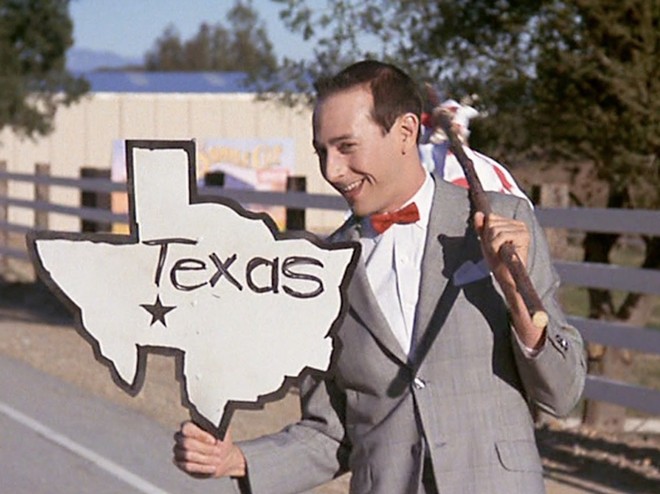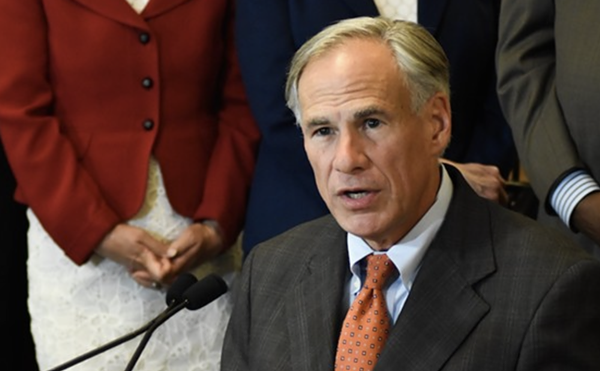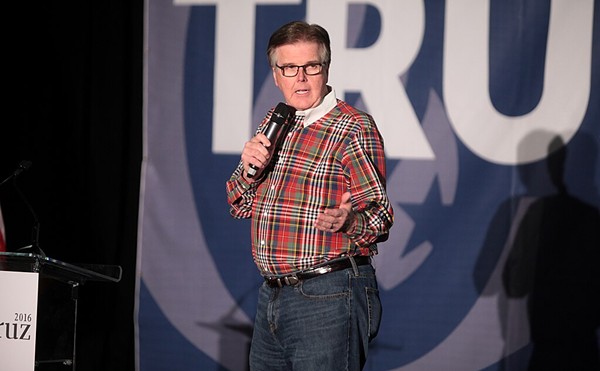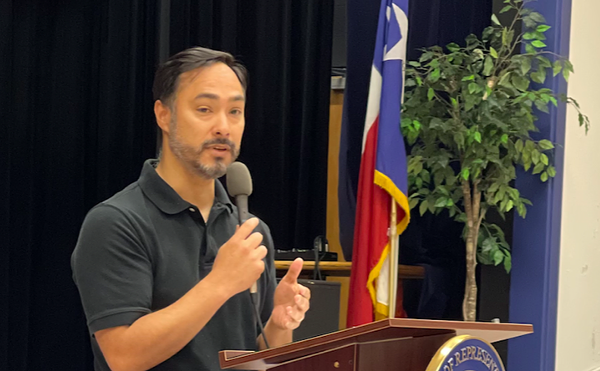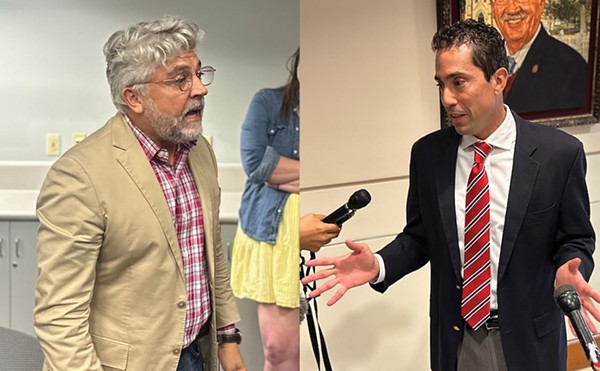Editor’s Note: Bad Takes is a column of opinion and analysis.
Most movie-loving Texans know the basement of the Alamo is featured prominently in Tim Burton’s 1985 classic Pee-Wee’s Big Adventure. And if you ask someone to name other movies set in San Antonio, you’re liable to hear about Miss Congeniality, starring Sandra Bullock, or Steven Spielberg’s big-screen directorial debut The Sugarland Express, or Jennifer Lopez’s role in Selena. Talk to a real film buff and you’ll discover that the first winner of the Academy Award for Best Picture, Wings, was shot at Kelly Air Force Base in 1927.These bar trivia-worthy excursions into local yore can’t really outdo Hollywood’s thoroughgoing cinematic love affairs with cities such as New York, Chicago, Los Angeles, and San Francisco. But is it even worth trying to hold our own with such competition? And exactly how much money should our state fork over to incentivize movies to shoot on location here?
The answer the Texas Legislature gave to that question last year was $200 million. That’s a hefty jump from the $45 million allocated the session prior. In addition to feature-length films, the Texas Moving Image Industry Incentive Program applies to video games, cartoons, reality TV and visual effects. In addition to cash grants, it offers exemptions from sales taxes and refunds for state occupancy and fuel taxes.
That’s a lot of forsaken revenue for a state without universal healthcare and whose schoolteachers sure could use a raise. Taking off our zero-sum-thinking hats for a sec, should we regard movie production incentives (MPIs) as sorely needed funding for the arts, or as corporate welfare for an already profitable industry?
GOP politicians never seem to tire of villainizing Hollywood’s “Cultural Marxist” indoctrination of the nation’s youth. Nevertheless, that $200 million moved surprisingly fast through the Republican-controlled Texas House and Senate, thanks in no small part to Lone Star State-born actors including Woody Harrelson, Matthew McConaughey, Dennis Quaid and Owen Wilson going to bat for it.
The media campaign was called “Good For Texas,” and as one might expect from movie stars reading a script, their YouTube video was heavy on production values and light on facts and figures. One claim did stand out though.
“Every dollar spent from Texas film funding puts $5 back into the Texas economy,” an Austin-based gaffer named Jaclyn Peralez-Fleming says in the clip.
Turns out, the source for that estimate is the Texas Film Commission (TFC) itself — the agency that doles out the dough. The Texas Media Production Alliance, an industry advocate organization, repeated the statistic in a paid article carried by the Texas Tribune. Other media repeated the figure as well.
However, I was hard-pressed to find anyone linking back to the report where that figure originated. Nor could I find that study anywhere online, much less an explanation of the methodology the TFC used to get its stat.
Bexar County is in the five top counties benefiting from the state program, according to data updated last September. And the TFC website boasts that the game show American Ninja Warrior shot two episodes in downtown San Antonio during 2017.
“We shut down Market Street in front of the courthouse for 10 days, and the production hired 38 local crew members,” Krystal Jones, the San Antonio’s then-film commissioner, told TV station KENS5, adding that the ninjas “stayed in hotel rooms, visited restaurants and visited wonderful attractions in town.”
She estimated the production brought in nearly $3.5 million, though KENS reported that the city provided a 7.5% rebate incentive on top of what the state already offers.
Time for a reality check.
“Any argument based on tax revenue that this will pay for itself, it’s nowhere close,” Nathan Jensen, a professor at the University of Texas at Austin’s Department of Government told CBS Texas last autumn of incentivizing film productions. “In terms of jobs, it tends to be a relatively small number or jobs, and not permanent.”
Sadly, the scholarly research without a horse in the race backs up Jensen’s buzzkill. First off, much of the touted economic development appears to be as overblown as a big-budget Hollywood production.
“The film industry and some state film offices have undertaken or commissioned biased studies concluding that film subsidies are highly cost-effective drivers of economic activity,” the Center on Budget and Policy Priorities, a progrsssive think tank, wrote back in 2010.
In what purports to be the first comprehensive examination of the impact of MPIs, published in the April 2020 issue of Contemporary Economic Policy, economist John Charles Bradbury found “no link between incentives that promote in-state filming and states’ economic growth,” concluding “any gains do not spill over into the overall economy.”
Further, “if resources are going to film production companies but are not having a positive effect on local economies, then the benefits appear to be flowing entirely outside the state,” he added. “This means that movie studios are increasing out-of-state spending and activities (which should not be surprising given that the film industry operates principally in California), capturing the savings as economic rents.”
And the most recent calculations of the dollar amounts we’re talking about are nothing less than obscene. Over the past 20 years, states spent $25 billion to woo Hollywood to film in their jurisdictions, according to a March report from the New York Times.
I’m all for investing heavily in grants for struggling local filmmakers and other artists. But how can the same liberals who oppose Gov. Greg Abbott’s voucher scheme on the grounds that it funds private schools by robbing from public education’s coffers then push for bankrolling multibillion-dollar movie studios?
Just as with public funding for sports arenas and relocation tax breaks for relocating employers, once one locale does it a perverse race to the bottom ensues. Cities, counties and states become locked in a competition over who can write the biggest corporate welfare check.
I’m sure courting ninja warriors is valuable. But so is cleaning up toxic waste and ending homelessness. For now, we may have lost our budget priorities in the basement of the Alamo.
Subscribe to SA Current newsletters.
Follow us: Apple News | Google News | NewsBreak | Reddit | Instagram | Facebook | Twitter| Or sign up for our RSS Feed

